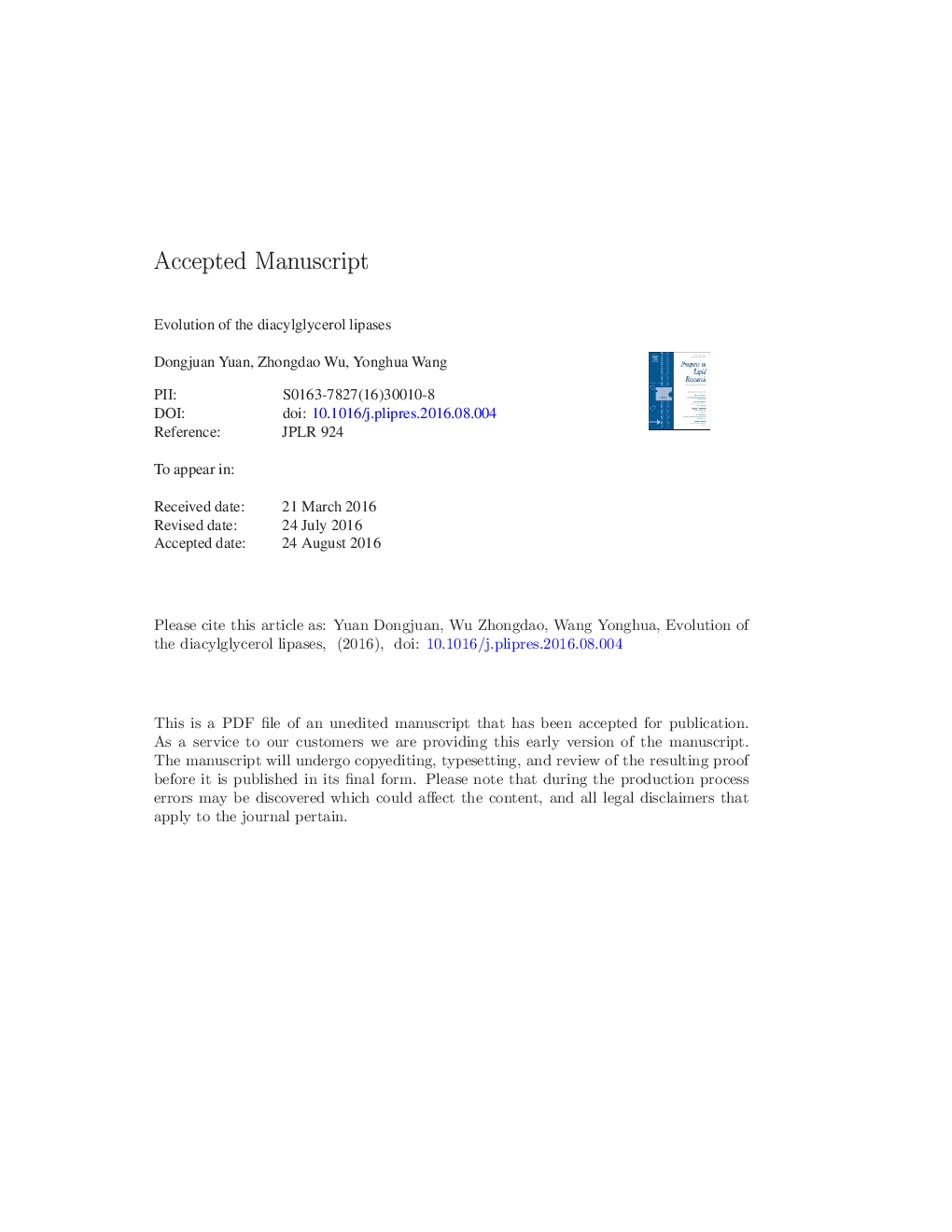| Article ID | Journal | Published Year | Pages | File Type |
|---|---|---|---|---|
| 2019082 | Progress in Lipid Research | 2016 | 36 Pages |
Abstract
Diacylglycerol lipases (DGLs) mainly catalyze “on-demand” biosynthesis of bioactive monoacylglycerols (MAGs) with different long fatty acyl chains, including 2-arachidonoylglycerol (2-AG), 2-linoleoylglycerol (2-LG), 2-oleoylglycerol (2-OG) and 2-palmitoylglycerol (2-PG). Enzymatic characterization of DGLs, their expression and distribution, and functional features has been elucidated from microorganisms to mammals in some extent. In mammals, biosynthesis, degradation and metabolism of these bioactive lipids intertwine and form a complicated biochemical pathway to affect the mammal neuromodulation of central nervous system and also other physiological processes in most peripheral organs and non-nervous tissue cells, and yet we still do not know if the neuromodulatory role of mammal DGL and MAGs is similar to invertebrates. Tracing the evolutionary history of DGLs from microorganisms to vertebrates will be an essential method to infer DGL and MAG research in organisms. In this review, we give an exhaustive explanation of the ancestral origin, divergence and evolutionary pattern through systemic searching of DGL orthologs in different species. Finally, we also summarize our recent work on the structural and functional studies of DGL in order to explore usage of DGLs in industry and the development of inhibitors for clinical intervention.
Related Topics
Life Sciences
Agricultural and Biological Sciences
Food Science
Authors
Dongjuan Yuan, Zhongdao Wu, Yonghua Wang,
